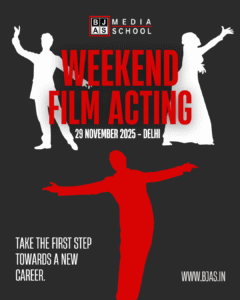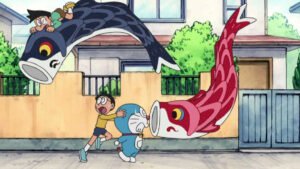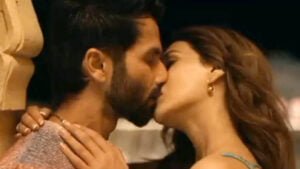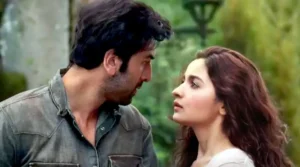For more, see: https://www.backstage.com/magazine/article/beyond-camera-famous-directors-worked-actors-2818/
“I think directors should at least take acting lessons to see what’s going on. And I think all actors should direct to see what a director has to go through.” – PENNY MARSHALL A League of Their Own, Riding in Cars with Boys
“All actors are cattle,” Alfred Hitchcock once said. The statement would later prompt one of his stars, Carole Lombard, to set up a livestock corral on the set of “Mr. & Mrs. Smith” populated by three young calves; each had the name of an actor on the film hanging around its neck.
Hitchcock often evoked real emotions from his actors to get the take he needed: “If he wanted you to be angry he would sometimes provoke you to a state of anger,” said Diane Baker (“Marnie,” 1964). “I remember one scene where I had to be strong and furious. He just stood there and wouldn’t look at me or wouldn’t talk to me before the take…. Later on, I realized it was all a tactic, but it added an extra element to the scene.”
William Wyler knew how to draw a performance out of an actor for the camera to capture. In the 1940s his films garnered the most consecutive acting nominations at the Oscars in history. Wyler was known to be a perfectionist, which earned him the nickname “40-Take-Wyler.” He was relentless in his pursuit of emotional depth and complexity and was skilled at taking from both the stage and literature for his films (“The Letter” starring Bette Davis; Lillian Hellman’s “The Children’s Hour”).
As a director, Orson Welles never again achieved the creative control he did with “Citizen Kane,” which included “final cut” of the film, but directing, he said, was the only job he loved. With his cast, he rewrote dialogue on the spot and was known to hold rehearsals prior to filming, which was unusual at the time. He believed in inhabiting a character completely. “Acting is like sculpture,” he said. “It’s what you take away from yourself to reveal the truth of what you’re doing that makes a performance. A performance when it deserves to be considered great or important is almost entirely made up of the actor himself.”
Akira Kurosawa, the most famed Japanese director, is a virtuoso of the cinematic art and a pioneer of action films. His approach to camera movement, lighting, set design, and performance has given us some of the most influential films to date.
The director relied on his cast to capture the desired mood, requiring them to be fully present in his environment. “The worst thing an actor can do is show his awareness of the camera. Often when an actor hears the call ‘Roll ’em’ he will tense up, alter his sight lines and present himself very unnaturally. This self-consciousness shows very clearly to the camera’s eye. But when [the actor] knows where the camera is, the actor invariably, without knowing it, turns one-third to halfway in its direction. With multiple moving cameras, however, the actor has no time to figure out which one is shooting him.” Kurosawa would often ask his actors to pick one gesture that represents their character and repeat it throughout the film.
Elia Kazan was an early director of Method actors and co-founder of the Actors Studio. Kazan brought a realness out of his performers that was never before seen. “The Method is terribly human, profoundly human.” According to Kazan, Method focused on the dignity of human emotion rather than the “showing off,” as he described it, usually akin to the classical actor’s performance. His methods with actors were questionable (he often pitted cast members against each other to capture “real emotion”), there’s no doubt that his directorial focus on emotion and pathos fostered career-defining performances from some of the best.
Stanley Kubrick has been described as an obsessive, complicated, controlling, a perfectionist. According to Malcolm McDowell who starred in “A Clockwork Orange” (1971), Kubrick often didn’t know what he wanted but he knew what he didn’t. It’s well documented that Kubrick’s methods for pulling performances out of actors were questionable at best. Shelley Duvall, for example, set the world record for number of takes for one scene—127—where she fended off “The Shining” co-star Jack Nicholson with a bat. She was so exhausted by the end of the film’s yearlong production, she reportedly started losing her hair.
“The director’s job is to know what emotional statement he wants a character to convey in his scene or his line, and to exercise taste and judgment in helping the actor give his best possible performance. By knowing the actor’s personality and gauging his strengths and weaknesses a director can help him to overcome specific problems and realize his potential,” said Kubrick.
Jean-Luc Godard is a film critic turned cinematic pioneer of the French New Wave of the late ’50s and early ’60.
One of Godard’s actors commented, “We appreciated that what we were doing was different through the way Jean-Luc directed us, physically. In older Hollywood movies, a character will make an entrance, close a door, light a cigarette, sit down, have a drink. In Jean-Luc’s movies, you were doing everything at once, and sometimes you wouldn’t shut the door all the way. Sometimes your cigarette wouldn’t light on the first try. You were always moving through the scene in an active way that was more like being than acting.”
Mike Nichols was revered as the ultimate actor’s director, an undisputed master of human behaviour, capable of distilling a character’s sprawling identity into a couple of hours on the screen or stage. How did he develop such a deep relationship with actors? “You spend time together, you and the actors and the writer—God willing, the writer is alive—and the designers in different segments. You spend some weeks together, to begin with just finding the answers to several questions—What is this about? And if it is about X, what is X really like in life?”
Spike Lee is adept at toeing the line on pressing issues without veering into the didactic and brings a particular brand of activism, politics, and pop art that’s made him synonymous with black and specifically Brooklyn culture.
When it comes to working with his actors, Lee puts full faith in his cast once they’ve been hired. As told to Backstage by DeWanda Wise, the star of his TV series adaptation of “She’s Gotta Have It,” “He shapes and molds and sculpts but it’s not acting school. He’s not there to pull a performance out of you.” Actors are expected to come prepared with choices and their own interpretation of the character they’re playing.
A few more comments adapted from https://solacting.com/sol-blog/4-famous-directors-and-their-advice-to-actors
“It’s incumbent upon a director, if you want to pull the best performance out of an actor, you have to really work to who they are and how they work, and not just expect them to hit a mark every time. You have to be very adaptable in the approach that you use with every different actor.” – RUSSO BROTHERS Captain America: Civil War, Avengers: Infinity War
“Be honest. If you don’t know the answer to something, own up to it. By doing that, you’re displaying an openness and a lack of fear. That’ll make actors feel very comfortable because the miracle of acting, to me, is the total lack of fear they have to have. When they sense that lack of fear in somebody else, they recognize it and appreciate it.” – CURTIS HANSON L.A. Confidential, 8 Mile
“You have to shoot the shock. Because even the most talented actor will have trouble being shocked twice. Because the timing of that is so instinctive, to reproduce it is almost impossible. I’ve worked with fantastic actors, and that’s the hardest thing, surprise. So if there is a surprise, you’ve got to shoot the surprise, which means you can’t show them the whole script before you start.” – KEN LOACH The Wind That Shakes the Barley, I, Daniel Blake
“I think directors should at least take acting lessons to see what’s going on. And I think all actors should direct to see what a director has to go through.” – PENNY MARSHALL A League of Their Own, Riding in Cars with Boys
Some YTs–Actors and Directors
https://youtu.be/6XX2wO3-qP4 Jonah Hill on Martin Scorsese
https://youtu.be/eOZ1c-cJuSw Sofia Coppola on directing actors
https://youtu.be/UyKzMaKVy8g Steven Spielberg on actors







